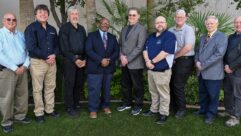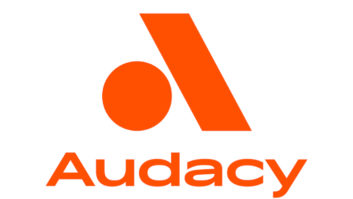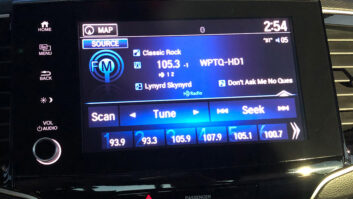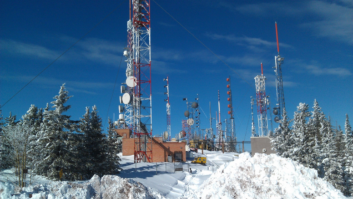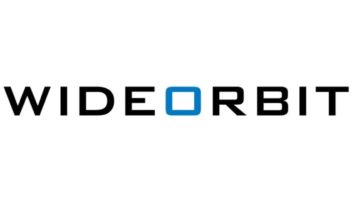Field Report: Neumann BCM-104
Oct 1, 2004 12:00 PM, By Rich Parker, GSEC
Vermont Public Radio has grown over the years into a statewide news and cultural service. We wanted a standard microphone setup for all of the studios to ensure a consistent sound for all our productions. For many years, VPR hosts used Neumann U-89 microphones in the production and on-air studios, supplemented by a small contingent of Electro-Voice RE-20s and RE-27s for on-air guests. As the number of VPR productions has increased, so has the demand on these quality condenser microphones. This meant a lot of moving mics around between studios, and eventually some damage to the fragile Neumann spider mounts occurred � with the replacement cost just for a single mount being $300.

With four main production studios, an on-air studio, a live performance recording studio and some field recordings of cultural events, a live recording opportunity required more mics than were left in the closet and recording engineers would have to juggle equipment. We needed more mics, and while we knew our staff would have loved to standardize on the familiar U-89s, we also knew that we couldn’t justify almost $3,000 per mic plus mounting hardware to outfit our studios adequately.
Performance at a glance Large-capsule, transformerless condenser
Sturdy, compact design
Excellent mounting system
Integrated pop filter
Offset connector
Color coded head grills available
Concealed filter and attenuation switches
138dB SPL capability
We began testing several microphones in the $1,000 price range to see if we could come up with another standard microphone that would fit our needs. There are a number of good quality mics available so it was a major undertaking to find a new standard when announcers are already comfortable with what they have. I heard from my public radio colleague Mike Pappas at WUVO in Denver that he was trying a new Neumann broadcast microphone that sounded great and listed for less than $1,000. Because we were already familiar with the sound of large capsule Neumann condensers, I quickly called our vendor and asked for a couple of units to demo in the studios.
That microphone was the new Neumann BCM-104, a large-capsule, single-pattern, pressure-gradient condenser mic optimized for broadcast use. The BCM-104 is a relatively new offering from Neumann, which is touted as being �especially designed for speech reproduction at close range.� The appearance of the mic is quite a change for Neumann. It’s a visually appealing unit with a hefty grill and body with an offset mic cable input that makes it immediately clear which is the business side of the mic.
The inner workings
Under the easily removable head grill is a classic, large-diaphragm K 104 capsule and transformerless electronics. Both are suspended by an elastic mount to reduce noise being transmitted from the boom. Inside it looks much like any other of Neumann’s single-capsule condenser mics, with the main difference being the inclusion of an integrated screen-mesh pop filter around the capsule in a tensioned mount that can easily be removed by hand for cleaning. The construction of these mics is solid so any worries about having a high-quality condenser mic in an on-air booth are greatly reduced. Removing the head grill is quick and easy, and even getting the hang of removing the mesh windscreen for cleaning is a snap.
We conducted A/B tests against our U-89s with various staff announcers and the reviews were generally positive. The sound of these mics is warm, open and uncolored and compares favorably with our previous mics. One of the immediate advantages we noticed with the BCM-104 was the form factor. The integrated mount eliminates the need for the cumbersome spider mount, which can be fragile and visually bulky. In addition, we found that the 89s really needed a pop filter of some kind, which only added to the visual clutter. The compact design of the BCM-104 makes it a more visually appealing unit, particularly in interview situations where guests and hosts are facing each other in the talk studio.

The mic can be disassembled to clean or replace the mesh grille.
The new mic also helped solve one problem we often experienced; with switches for multiple pattern settings, roll-off choices and attenuation located in plain view on the 89’s body, things would get changed from time to time, caused by accident while handling or moving the mic between studios or by announcers who were sure that they knew best how to set up the mic (and naturally forgetting to set it back to normal for the next announcer on duty). With a single cardioid pattern and the attenuation and hi-pass filter switches mounted safely out of harm’s way inside the body, the 104s have made life much easier for the engineering staff.
Overall sound
The strength of these mics is their transparent and open sound, but in some cases that can be a disadvantage, depending on the announcer. Although the initial reaction from most of the staff was positive, there was a bit of a learning curve for some of our announcers. Because we no longer used the bulky grey foam sock the mics immediately sounded much brighter and more present (Neumann specs for the WS89 foam windscreen used on our U-89s list 3dB of roll-off at 15kHz). There is an ever so slight 2dB rise from 3kHz to 5kHz, and coupled with the missing attenuation from the foam sock to which everyone had grown accustomed, the transparent and slightly brighter response was not optimal for every announcer. Voices that tended to be sibilant before were more so. On the other hand, announcers with great radio voices could even work the mics a bit further back and get a fantastic sound from them. The built-in hi-pass filter works well to compensate for proximity effect bass boost when working the mic closely, while still retaining a warm, open and pleasant sound.
NeumannP
F
W
E
800-434-5220
860-434-3148
www.neumannusa.com
[email protected]
It will take some additional experimentation to get things just right for everyone and, in extreme cases, we may elect to still provide some announcers with a foam windscreen to compensate for their particular voices or to compensate for poor mic technique, which in some cases had been masked by the large foam windscreen on the 89s. The 104’s internal pop filter works quite well, but there are some extreme cases that even it can’t handle adequately and so a foam sock may be needed.
Neumann claims the 104s have been optimized to minimize the effects of head movement, but some of our talk studio board ops noticed that non-broadcast professional guests can get off mic more easily than with the RE-20s we previously used, so we may decide to keep those mics available in the studio if needed, as they do seem to be a bit more forgiving in that regard. In addition, the 104s are so transparent that they have actually exposed some small quirks in our processing and air chain that we will address.
Overall, these mics sound quite good, and we have been able to achieve a standard look and sound throughout our facilities. As we continue to learn ways to maximize the unique qualities of these mics in our environment, I think even our few remaining skeptics will be won over. With a street price of less than $700 each we were able to purchase a dozen units to completely outfit our air, production and remote studios, freeing the U-89s for our recording engineers to use full time. With the BCM-104, fans of the classic Neumann sound can now outfit their studios with a solid mic without breaking the bank.
Parker is director of engineering for Vermont Public Radio.
Editor’s note:Field Reports are an exclusive Radio magazine feature for radio broadcasters. Each report is prepared by well-qualified staff at a radio station, production facility or consulting company.
These reports are performed by the industry, for the industry. Manufacturer support is limited to providing loan equipment and to aiding the author if requested.
It is the responsibility of Radio magazine to publish the results of any device tested, positive or negative. No report should be considered an endorsement or disapproval by Radio magazine.


